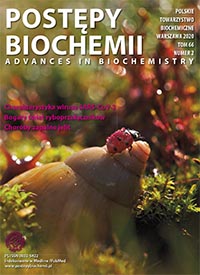Unusual semiquinone as an electron buffer in enzymatic quinone oxidation
DOI:
https://doi.org/10.18388/pb.2020_326Abstract
Cytochromes bc1 and c b6f are part of respiratory or photosynthetic machinery. The main role of these enzymes is to build proton motive force across the bioenergetic membranes by coupling the proton translocations with electron transfer from the pool of membrane-soluble quinones to water-soluble redox proteins. Despite many years of research, the mechanism of quinol oxidation is not fully understood. It is assumed that unstable form of a partially oxidized quinol â semiquinone is an intermediate state of this process and that it is also a potential electron donor in the side reaction of superoxide generation. This semiquinone has remained experimentally elusive over years but recently a semiquinone interacting with the reduced iron-sulfur cluster was identified as a new state of the enzyme. The results indicate that semiquinone coupled to the iron-sulfur cluster is most probably an additional state that can prevent side reactions, including superoxide generation.
Published
Issue
Section
License
Copyright (c) 2020 Advances in Biochemistry

This work is licensed under a Creative Commons Attribution 4.0 International License.
All journal contents are distributed under the Creative Commons Attribution-ShareAlike 4.0 International (CC BY-SA 4.0) license. Everybody may use the content following terms: Attribution — You must give appropriate credit, provide a link to the license, and indicate if changes were made, ShareAlike — If you remix, transform, or build upon the material, you must distribute your contributions under the same license as the original. There are no additional restrictions — You may not apply legal terms or technological measures that legally restrict others from doing anything the license permits.
Copyright for all published papers © stays with the authors.
Copyright for the journal: © Polish Biochemical Society.




